How Do You Stop A Wig From Itching?
Wigs are getting more and more popular among women because of their natural appearance and convenience. However, some wig wears sometimes will feel itchy but don’t know the detailed reason. We’ve done some research so that you can get to the bottom of why lace front wigs itch so bad and what you can do to prevent twig from itching.
Why Does My Wig Itch So Bad?
1. Your natural Hair is Dirty.
To be honest, nothing is better than wearing a comfortable wig. But there is a common problem for many wigs wears. Even though the lace front wig is gorgeous and natural, it still is an itchy wig. If your lace front wig is itchy, it may be because your natural hair under the wig is very dirty. After all, if your scalp has a build-up of hair products, sweat, or sebum, it will irritate your scalp under the wig and clog your hair follicles, thus resulting in an itchy sensation. Even the build-up can also lead to acne on your scalp. It will be very itchy, too!
2. You Have Dandruff.

Dandruff may be the reason why you have an itchy wig. Dandruff is a scalp condition that causes the skin of the scalp to become flaky. If you have dry flaky scalp or yeast overgrowth on your scalp, your scalp and hair follicles will be inflamed and itchy.
3. You Are Allergic To Your Shampoo Or Hair Products.
Another reason your lace front may feel itchy is to do with the hair products you are using. You should also take note of which products you are using on your hair and your wig as you may have an allergy to some of the ingredients.
4. Your Natural Hair Is Not Completely Dry Before Installing A Wig.
If you do not blow dry your natural hair completely before putting your wig on, you may experience an itchy sensation, too. So0 be sure to dry your natural hair thoroughly before installing your wig because the excess moisture may lead to discomfort.
5. There Is A Lack Of Air Flow Between Your Scalp And Wig.
When your scalp can not breathe through the wig cap, it will get too sweaty and damp.
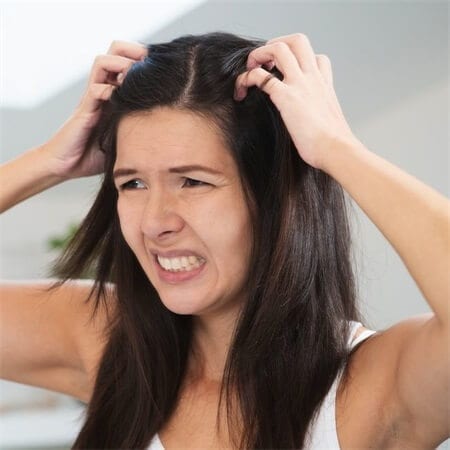
6. Your Wig Cap Is The Right Size.
If you have a big wig cap, it may move around. And if the wig cap is too small, it will tightly press against your skin. There is no denying that this excess movement or restriction will lead to various skin sensitivities and even cause inflammation on your scalp, thus resulting in it being itchy.
7. You Are Allergic To Wig Glue.
For these people with sensitive skin, it is common to have an allergy to glue used to secure the lace front wig. It may be a reason why your wig itch so bad.
8. Your Lace Front Is Not Secure.
The most common reason why your lace front wig is itchy is maybe if the lace itself is not secure. If the lace has not been cut and glued down securely, the tough lace may be moving around and scratching your skin, and even cause itchiness.
How To Stop Wig From Itching
1. Regularly Wash Your Natural Hair
The best way to make a lace front wig less itchy is to regularly wash your natural hair and keep your natural under the wig cap healthy and clean. For example, try and use a clarifying shampoo once a week to cleanse your scalp.
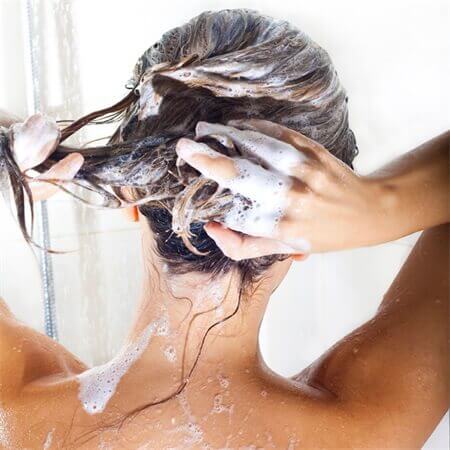
Besides, if you’re planning to wear your wig for a long time, your natural hair could become dry, so please ensure that you’ve washed and cleansed your hair thoroughly before wearing your wig. And you can use a hair mask to deep-condition your natural hair to keep your natural hair moisturized.
Of course, it would be better to use a wide-toothed comb to brush your hair to remove any tangles or knots before installing a lace front wig.
If you are interested in what to do with your natural under a wig, please read How To Prepare Your Natural Hair For A Wig for more methods.
2. Try Natural Hair Products
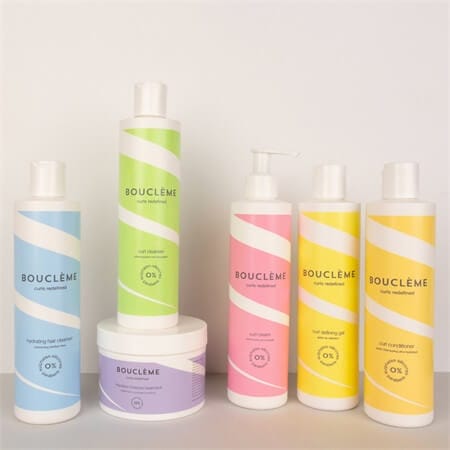
In order to keep you from being allergic to ingredients in products you have used before, you had better try and stick to using more natural hair products. These natural products do not contain any harsh chemicals or ingredients that could irritate your skin and cause an allergic reaction.
3. Use Products That Are Specially Designed For Dandruff

For mild dandruff, firstly try to regularly clean with a gentle shampoo to reduce the buildup of oil and skin cell. If that is not very helpful, try to apply a medicated dandruff shampoo to wash your hair two to three times a week. If you usually use hair spray or other styling products, try to avoid those that contain alcohol.
4. Consider Using A Cotton Or Silk Wig Liner
Covering your scalp with a cotton or silk wig liner is the best bet for you to prevent your scalp from getting dry and itchy. That is because they are very breathable and can act as a protective barrier between your head and the wig.
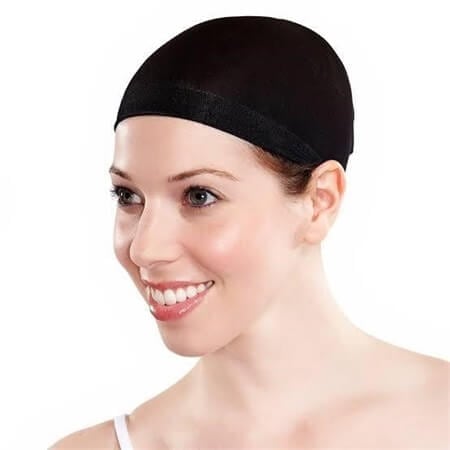
Furthermore, a 100% cotton or silk liner can be worn under your wig, which will help absorb moisture and heat, promote airflow, but will also prevent your scalp from drying out, thus making your head feel more comfortable.
Or you can purchase some very thin and lightweight cotton t-shirts, trim them to the shape of the wig cap, and then wear them under the wig.
5. Never Compromise On The Quality Of Your Wigs
No matter what type of wigs you choose, whether synthetic wigs or human hair wigs, please choose a high-quality wig. Using quality products will cause less itching, less irritation and they tend to reduce the build-up of the products.
Compared to high-quality wigs, low-quality wigs are more likely to itch and feel uncomfortable. In addition, you’re going to be wearing it for a few months at least, so don’t skimp on cost and spend more time searching for a quality wig.
Some survivors recommend synthetic hair over real human hair, saying it washes easier, has less product build-up, and stays comfortable longer.
If you prefer human hair wigs to synthetic wigs, nothing is better than opting for a well-done human hair wig that is made of 100% virgin human hair.
6. Rinse Your Wigs Thoroughly
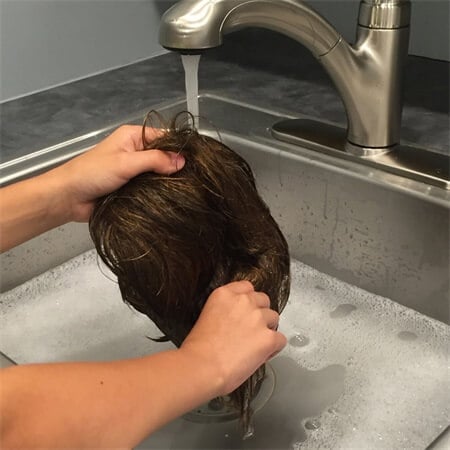
Never ever wash your wig in a hurry because you will only pay its price afterward. For example, shampoo buildup can cause itching. Therefore, when washing your wig, you need to make sure you rinse it thoroughly and ensure that no shampoo or other hair styling products are left on the wig at the same time.
7. Opt for A Proper Wig Cap
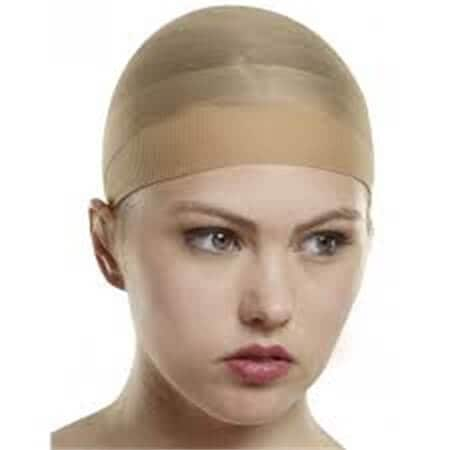
You can choose a 100% hand-tied wig cap to wrap your hair tightly and pin it down properly, which can ensure your natural hair doesn’t move around under the wig and poke or irritate your head. More important, it is very soft and flexible.
8. Choose An Alternative To Wig Glue
If you don’t know whether you are allergic to the wig glue you buy, you should always do a patch test before using it. Apply a small amount of glue on your skin and leave it to dry. Then start to monitor if you have any unusual sensations or reactions or not.
If you experience any discomfort, please stop using it and consult with a healthcare practitioner. If you are sure that you have an allergy to glue, opt for another alternative recommended by your hairstylist.
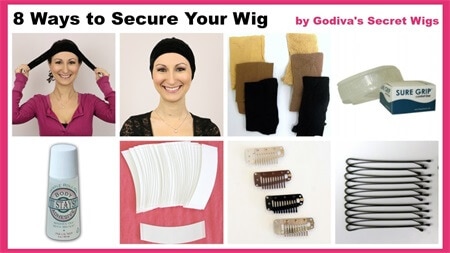
Except for wig glue, there are many ways to hold the wig securely. If you are interested, please see How To Keep A Wig From Slipping for more hacks.
9. Use Zinc lotion To Disinfect Your Scalp
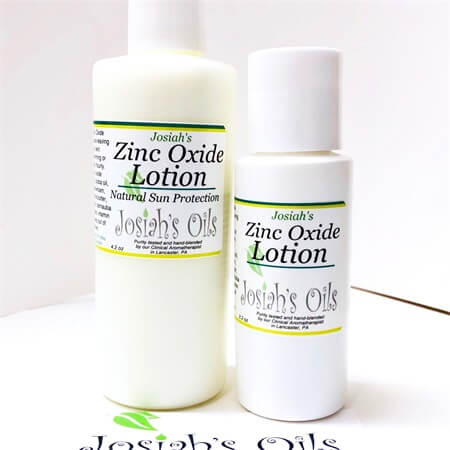
When you wear wigs your own hair is deprived of necessary air and moisture, which in turn can result in infections, irritations, and itching. While as a natural antibacterial, zinc can help prevent infections.
Therefore, it’s essential to use zinc to disinfect your scalp regularly to help reduce mini infections or infected hair pores on your scalp and prevent it from becoming a breeding ground for bacteria.
10. Properly Put On The Wig
An important step to keeping your wig from itching is to wrap your hair tightly and pin it down properly, paying special attention to the ends being pinned down, which will ensure your hair doesn’t move around under the wig and poke or irritate your head.
After all, there are some lower-quality wig caps that are made with hard, scratchy materials in the market that can be irritating. And pulling at it or adjusting it too frequently will only increase the risk of itching.
There is a video about how to put on a wig properly for you as a reference.
